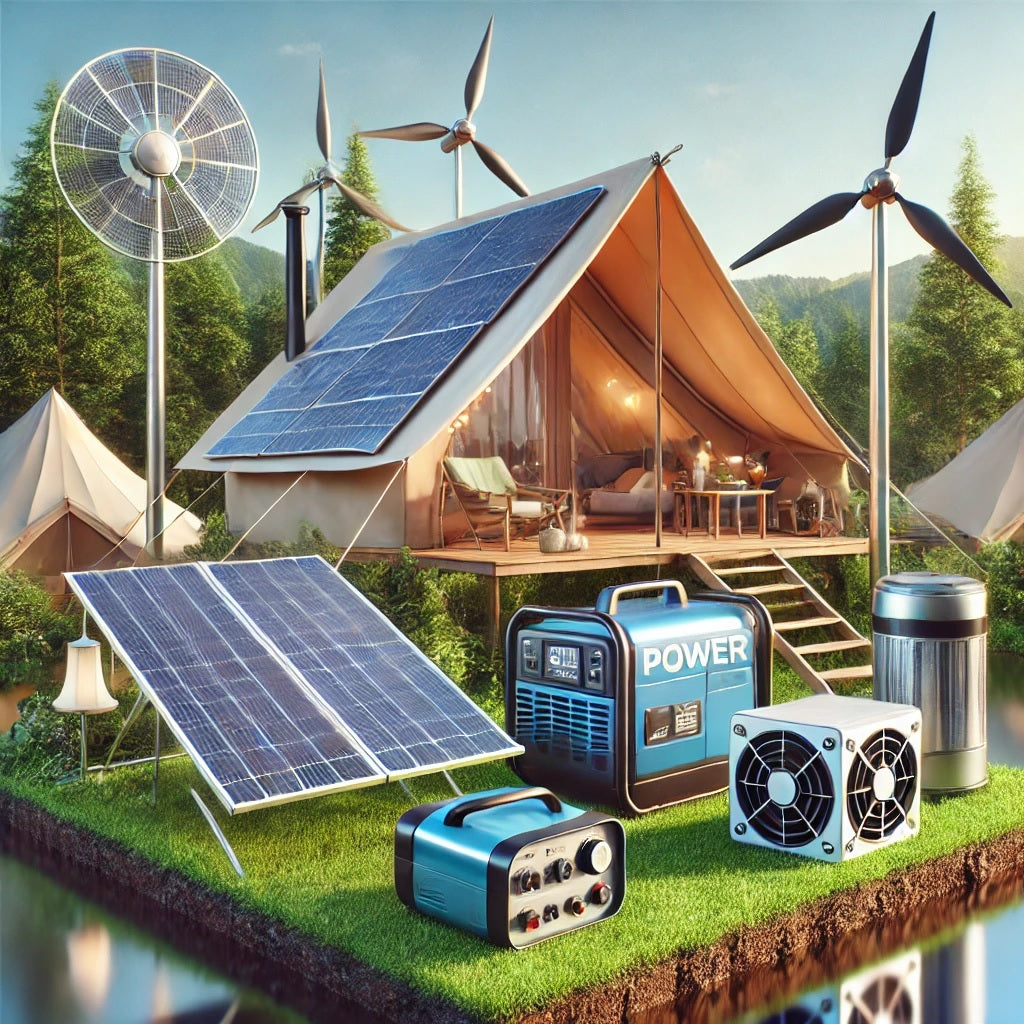
Powering Your Glamp Site: Portable Power Stations vs. Traditional Generators
Share
Introduction
Power is comfort—and in glamping, comfort is everything. Whether you’re running string lights, charging devices, or powering a mini-fridge, your choice of energy source can make or break the experience. The debate between portable power stations and traditional gas generators comes down to more than watts—it’s about convenience, sustainability, and peace of mind in the great outdoors.
1. The Rise of Portable Power Stations
Portable power stations have rapidly become the go-to energy solution for modern glampers. Compact and rechargeable, they use lithium-ion battery technology to deliver clean, silent electricity. Unlike gas generators, they don’t require fuel or oil and emit zero fumes, making them ideal for use inside or near glamping tents such as the Galaxy Air-Beam Tent.
Key Advantages:
Silent operation: Perfect for maintaining a serene glamp site.
Eco-friendly: No emissions, ideal for sustainability-conscious travelers.
Recharge flexibility: Can be powered by solar panels, car outlets, or standard AC wall plugs.
Lightweight and compact: Easy to transport and store.
Top brands like Jackery, EcoFlow, and Bluetti have designed high-capacity models capable of running mini-fridges, fans, or CPAP machines. For example, the Jackery Explorer 1000 provides enough juice for most weekend glamping setups without breaking a sweat.
2. Traditional Generators: Power Without Limits
Gas-powered generators have long been the backbone of off-grid living. They deliver more raw wattage than most battery packs and can handle heavy-duty equipment like heaters or portable AC units—essential for long-term setups such as the Jellyfish Air-Beam Tent.
Benefits of Gas Generators:
Higher output: Ideal for large appliances or full-site setups.
Unlimited runtime: As long as you have fuel, the power keeps flowing.
Rugged reliability: Proven technology that performs in all weather conditions.
However, the tradeoff comes in the form of noise, fuel costs, and emissions. Generators also require more maintenance and are subject to quiet hours in most glamping resorts or public campgrounds.
3. Comparing the Two: What’s Right for You?
| Feature | Portable Power Station | Traditional Generator |
|---|---|---|
| Noise Level | Virtually silent | Loud, requires distance |
| Fuel Source | Rechargeable battery | Gasoline or propane |
| Maintenance | Minimal | Regular oil and filter checks |
| Runtime | Limited by charge | Continuous (with fuel) |
| Eco Impact | Zero emissions | Carbon emissions |
| Best For | Weekend glamping, eco-resorts, light loads | Large events, long-term setups, heavy power needs |
For most luxury glampers, a portable power station strikes the perfect balance between convenience and sustainability. They pair beautifully with solar panels and can easily recharge during daylight hours, ensuring uninterrupted power for lights, fans, and chargers.
4. Hybrid Power Systems: The Best of Both Worlds
For larger or semi-permanent glamp setups, combining both systems offers optimal flexibility. Use a portable power station for quiet nighttime use and switch to a traditional generator during peak daytime hours when noise isn’t a concern.
This hybrid approach also works well for eco-conscious resorts—charging stations during the day, silent battery use at night. Many glamping businesses are now marketing their sustainability efforts using this model to attract environmentally conscious travelers.
5. Safety and Practical Considerations
Always store gas generators at least 20 feet from tents or enclosed areas.
Use carbon monoxide detectors in enclosed tents.
For power stations, avoid exposure to direct rain or extreme heat.
Keep extension cords rated for outdoor use and properly grounded.
Conclusion: Choosing Your Perfect Power Partner
Both portable power stations and traditional generators serve vital roles in the glamping world. If your priorities include quiet operation, clean energy, and mobility, a Jackery Generator or EcoFlow River Pro is your ideal companion.
For long-term or heavy-use sites, a small inverter generator can still be a solid investment—just remember to maintain distance, ensure proper ventilation, and respect the tranquil spirit of glamping.
Whether you’re camping beneath the stars in a Jellyfish or relaxing lakeside in a Galaxy, your power setup should work as effortlessly as your surroundings.
